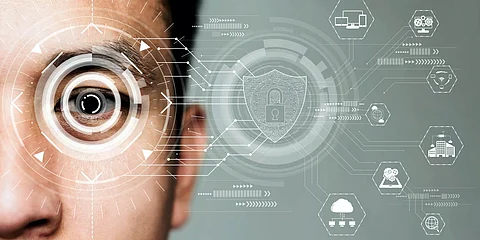

The Covid-19 pandemic has changed the usual working system. Now, business organisations are more focused on workers safety. They have taken new measures to ensure employees and customer protection from the infection. The major revolution that is changing the face of commercial entities is technology.
Commercial outlooks have started reopening despite the second wave of Covid-19 resurgence in countries like the United Kingdom, Spain and Germany, while India and the United States are still struggling to get over the first wave. The plummeted economy is posing a far worse threat that could last for years, even after a vaccine is on track. Henceforth, the economic sector took the critical step to re-open all the resumed works with high safety measures. This has brought new technologies as well as helped some AI companies to go hand-in-hand with wellness analysis to a new future.
Major tech giants switching from one technology to the other or embracing inter-course innovation to come up with new ideas and development is a usual story. This has happened in the past as companies encountered dramatic shifts in products or directions that transformed them into household names and grand successes. For example, the almighty video-sharing app YouTube started as a dating site before emerging as a major player in video posting. Slack, the ubiquitous business communications software started as an internal tool that an online gaming company built for itself.
VSBLTY Groupe Technologies Corp, an independent software vendor based in Vancouver is changing its direction to sophisticated service. The company has introduced wellness analysis, capacity management and density metrics to allow for real-time building safety. VSBLTY boasts a suite of products that were created for the retail sector, using machine learning and computer vision to give store owners detailed and through analyzed data about the customers who come through their door. The mechanism also exhibits the customer's habits and reactions while shopping.
Jay Hutton, CEO of the five-year-old software solution said the company has allied with hardware partners to check the wellness of workers and customers in retail stores, office buildings, factories, etc. The system monitors temperature and recognises if the passers-by are wearing masks.
VSBLTY's service expansion into a smart building market is projected to reach US$109 billion by 2026. A deal was signed recently to put its suite of software like VisionCaptor, DataCaptor and AI-driven vector into hardware made by Kiosk Information Systems (KIS), the world's third-largest manufacturer of digital kiosks.
Digital kiosk at stores: When a digital kiosk is installed at the entrance of a retail store, the customers who pass-by the door are greeted by the system. It scans the shopper's temperature from as far as 26 feet away and determines whether they are wearing a mask, as mandated by the store rules. If the temperature is safe and they are masked, a green light gives the signal to proceed. If the protocol is not met, a red light alarms them to consult a physician.
Digital kiosk at office building: Like the previous system, digital kiosk scans the worker's temperature and checks the mask status while they are entering the office premise. The employee's presence and the office they are going to is logged automatically. In case of an outbreak in the office, the digital kiosk will direct the contact of the Covid-19 positive employee.
In both examples, the VSBLTY-powered kiosks have helped companies manage how many people are in their space and create an audit trail to minimize companies' exposure to liability and fines in the face of new and changing government safety regulations.
Computer vision is the major technology used in the process of doing temperature checks, mask checks, building-capacity control, etc. Computer vision is originally focused on retail by collecting and compiling data that allow humans to make decisions on issues from safety to merchandising.
Computer vision is a field of artificial intelligence that trains computers to interpret and understand the visual world. Using digital images from cameras and videos and deep learning models, machines can accurately identify and classify objects and then react to what they see. VSBLTY's core tech is to pull out video streams live and interpret them with the help of computer vision.
Join our WhatsApp Channel to get the latest news, exclusives and videos on WhatsApp
_____________
Disclaimer: Analytics Insight does not provide financial advice or guidance on cryptocurrencies and stocks. Also note that the cryptocurrencies mentioned/listed on the website could potentially be scams, i.e. designed to induce you to invest financial resources that may be lost forever and not be recoverable once investments are made. This article is provided for informational purposes and does not constitute investment advice. You are responsible for conducting your own research (DYOR) before making any investments. Read more about the financial risks involved here.
